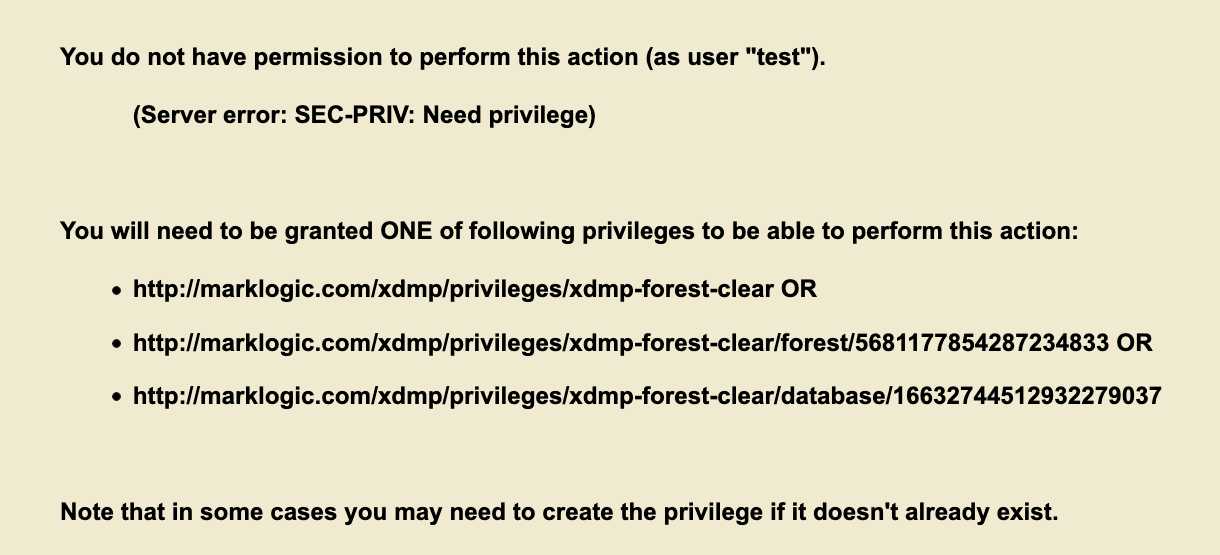
MarkLogic Server 11.0 Product DocumentationAdministrator's Guide — Chapter 2
Administrative Interface
The MarkLogic Server administrative interface (or Admin Interface) is used to configure the MarkLogic Server software on your system. This chapter provides a general overview of the Admin Interface and includes the following sections:
- Overview of the Admin Interface
- Accessing the Admin Interface
- Logging Off the Admin Interface
- Creating and Managing Administrators
Overview of the Admin Interface
With the Admin Interface, you can complete any of the following tasks:
- Manage basic software configuration
- Create and configure groups
- Create and manage databases
- Create and manage new forests
- Backup and restore forest content
- Create and manage new web server and Java-language access paths
- Create and manage security configurations
- Tune system performance
- Configure namespaces and schemas
- Check the status of resources on your systems
The Admin Interface is implemented as a MarkLogic Server web application. By default, it runs on port 8001 of your hosts. If you have completed the basic tasks in the Getting Started with MarkLogic Server manual, then accessing the Admin Interface requires that you enter a username and password. After you have been authenticated, you should not need to re-enter your username and password to complete any of the other tasks outlined in this guide during the current session.
Some configurations changes require the server to restart to reflect the changes. Configuration changes that do not require the server to restart to reflect the changes are defined as hot. In a clustered deployment, cold tasks will require all of the hosts in the cluster to restart their instance of MarkLogic in order to reflect the changes. In a single-server deployment, cold tasks will cause MarkLogic to restart in order to reflect the changes. For a list of which tasks are hot and which are cold, see Appendix A: 'Hot' versus 'Cold' Admin Tasks.
Accessing the Admin Interface
Only authorized administrators can log into the Admin Interface. An authorized administrator is a user who has the admin role or has the admin-ui-user role. Authorized administrators with the admin role have access to all administrative tasks in MarkLogic Server; therefore, authorized administrators are trusted personnel and are assumed to be non-hostile, appropriately trained, and follow proper administrative procedures.
Users with the admin-ui-user role may view the Admin UI, but not have access to data or the ability to make administrative changes. For more about the admin-ui-user role, see The admin-ui-user role.
To access the Admin Interface, complete the following procedure:
- Open the following URL in a browser:
http://localhost:8001/
If you are not accessing the Admin Interface from the same system on which MarkLogic Server is running, you will have to use the IP address or domain name of the server instead of
localhost. - Log in with your admin username and password. The summary screen for the Admin Interface displays.
If you have already logged on as an admin user during this session, you do not have to log in again.
From the summary screen, you can see and click on many of the items configured in MarkLogic Server. The summary screen displays all of the Databases, App Servers, Groups, Forests, Security objects, and Hosts configured for your system. If you click on any object or category, the Admin Interface takes you to a more detailed page for the object or category.
Logging Off the Admin Interface
To log off the Admin Interface, close the browser window used to access the Admin Interface. This action is sufficient to end the current session and force the user to authenticate again starting another session.
Creating and Managing Administrators
MarkLogic Server administrators are managed by defining which user has the admin role. Users with the admin role, known as authorized administrators, are trusted personnel and are assumed to be non-hostile, appropriately trained, and follow proper administrative procedures. For the procedures for creating, managing and removing administrators, see Security Administration.
The admin-ui-user role
The admin-ui-user role has a set of base privileges that are required in order to use the Admin UI. The role allows the user read-only Admin UI usage, but does not give them access to the data, to security configuration, or write access to Server configuration.
If an admin-ui-user attempts to perform an action for which they do not have the privilege, an error message is displayed.
The error message contains the privilege or privileges needed to perform the action.
